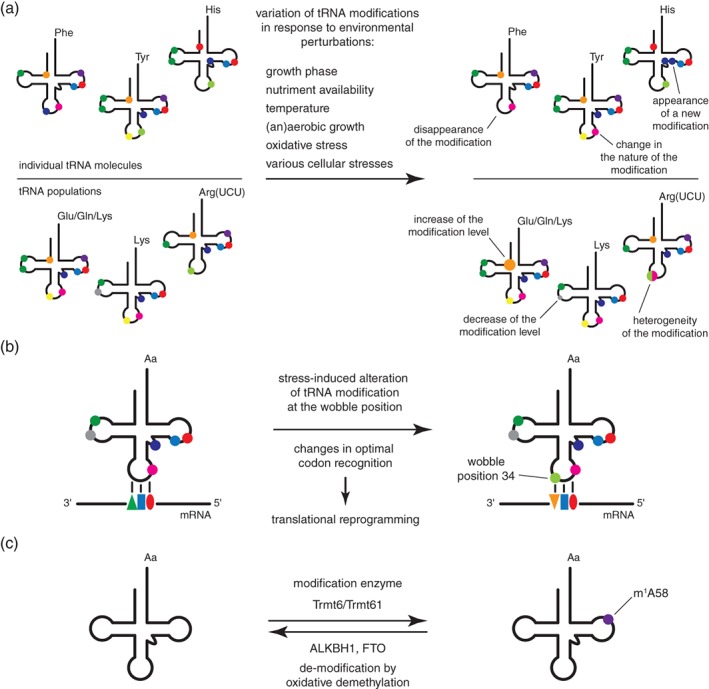Figure 4.

Dynamic changes in tRNA modification levels. (a) Variations of tRNA modifications in response to environmental perturbations. In response to various environmental or cellular factors, such as growth phase, nutriment availability, temperature, aerobic versus anaerobic growth, oxidative stress, or various cellular stresses, the levels and/or the nature of certain modifications can change in tRNAs. Variations occur at the level of individual tRNA molecules (disappearance of a modification, appearance of a new modification, and change in the nature of the modification). These variations collectively impact the level of modifications in tRNA populations, such as particular isoacceptors (e.g., tRNALys) or isodecoders (e.g., tRNAArg(UCU)). In a certain tRNA population, these variations may appear in the form of increased or decreased modification levels, or may introduce modification heterogeneities at certain positions. (b) Stress‐induced alteration of tRNA modification at the wobble position can lead to translational reprogramming. Stress‐induced alteration of tRNA modification at the wobble position 34 changes the optimal codon recognition of the given tRNA and thereby upregulates the formation of critical stress‐response proteins encoded by mRNA transcripts enriched in this particular codon adapted to the altered wobble modification. (c) Variations in tRNA modifications and active demodification processes. The m1A58 modification, introduced in human by the Trmt6/Trmt61 modification enzyme, can be actively removed by the demodification enzymes ALKBH1 and FTO via an oxidative demethylation process.
